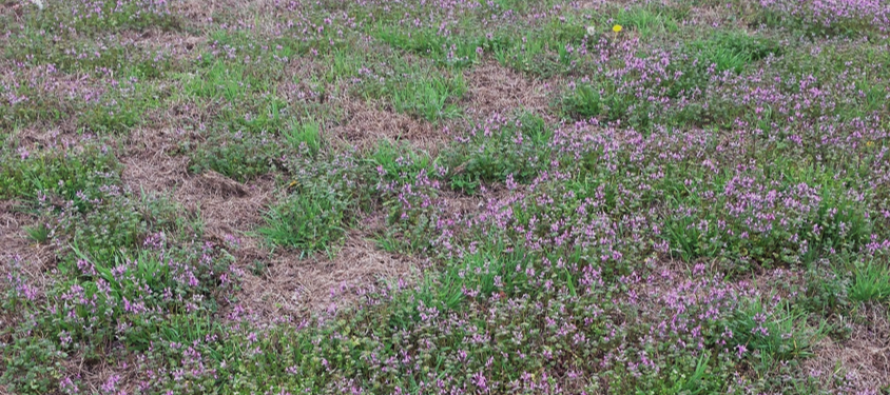Burndown Scenarios for Mississippi Soybean

Spring burndown has been challenging this year because of excessive rain and cold temperatures. As the optimum planting window for soybean approaches, careful consideration should be given to herbicide options for burndown or cleanup prior to planting. This can be difficult because several different scenarios combining prior burndown and potential planting dates exist.
First, consideration should be given to the targeted planting date. Regardless of the current weather pattern, planting during mid-April has been optimum for soybean in Mississippi. Fields that are projected to be planted between now (March 27) and April 15 may fall into one of the following categories:
No burndown herbicide applied to date:
In this case, a combination of herbicides and multiple applications will be required for a clean seedbed at planting. Unfortunately, since no burndown herbicide has been applied and the targeted planting date is rapidly approaching, the list of herbicide options for postemergence control is much smaller due to factors such as weed size/density and/or plantback restrictions. However, application of a residual herbicide remains an option. The efficacy of residual herbicides will be reduced when applied to fields with dense vegetation because the herbicide does not make it to the soil surface. Application of a residual herbicide 7 to 14 days prior to planting offers a higher probability of receiving an incorporating rainfall that ensures the herbicide is working when the crop is planted and reduces the soybean injury potential.
Potential treatments for general burndown in this scenario are as follows:
- Glyphosate plus 2,4-D at 0.5 to 1.0 LB AE/A. Close attention should be given to 2,4-D formulation, application rate, actual planting date. More information on burndown with 2,4-D can be found here.
- Glyphosate plus Sharpen at 1 OZ/A. This treatment may be applied up to planting in fields that do not contain coarse-textured soils with <2% organic matter. Sharpen rate may be increased to 1.5 OZ/A; however, 14 days is required before soybean planting.
- Glyphosate plus Canopy EX at 1.1 to 2.2 OZ/A. Canopy EX offers postemergence and residual weed control. However, it carries soil texture, organic matter, and pH restrictions that should be followed.
- Glyphosate plus Firstshot at 0.5 to 0.8 OZ/A. Depending on weed spectrum, Firstshot at 0.8 OZ/A will likely offer better weed control than Firstshot at 0.5 OZ/A. However, the planting restriction increases from 1 to 7 days if application rate exceeds 0.5 OZ/A.
- Glyphosate plus a variety of residual herbicides. A list of these can be found in the 2015 Weed Control Guidelines for Mississippi (MSU-ES P1532).
- Paraquat-based treatment. Multiple applications of paraquat at 0.75 to 1.0 LB AI/A will be required in fields with no prior burndown. Temperature, application volume, droplet size, and choice of tank mix herbicide will influence the efficacy of paraquat-based treatments.
Burndown has been applied, but an additional application is required:
In fields where burndown herbicides were applied last fall or during the clear weather in February, it is likely that weed escapes, regrowth, and/or new emergence is now the primary problem, and herbicide requirements will vary depending on these factors. Another issue in this scenario is whether tillage (rehip,drag beds, etc.) will be required prior to planting. A rule of thumb is to wait 4 to 6 days between herbicide application and tillage if possible.
Potential treatments for general burndown in this scenario are as follows:
- Glyphosate alone or glyphosate plus Firstshot. This treatment should be applied where the current weed infestation is not severe and tillage is required.
- Paraquat plus metribuzin (or prepackaged mixtures containing metribuzin). Mixing paraquat and metribuzin will enhance control of emerged species and provide residual weed control.
Planting after April 15:
If targeted soybean planting date is after mid-April, most burndown herbicide treatments are still an option. An important consideration in this scenario is that the residual herbicide component of a burndown application made now will likely not persist through soybean planting and emergence. Therefore, an additional application of a residual herbicide application is recommended at planting.
Potential treatments for general burndown in this scenario are as follows:
- Glyphosate plus dicamba and/or 2,4-D. A minimum accumulation of 1 inch of rainfall followed by a 15 day waiting period is required when applying dicamba in fields to be planted to soybean. More information on burndown with dicamba and 2,4-D can be found here.
- Glyphosate plus dicamba and/or 2,4-D plus a residual herbicide. The residual herbicide is important in fields where no tillage will be performed from time of application until planting.
- Glyphosate followed by tillage. Many winter weeds are currently too large to be adequately controlled with tillage. However, in fields where glyphosate-resistant Italian ryegrass and/or horseweed are not problematic and the field was not prepared previously, tillage/land prep following a glyphosate application could serve a dual role and save at least some money.
Because of the geographic area on which soybean is planted in Mississippi, planting dates, soil texture, topography, and cultural practices vary widely. Often this means that burndown herbicides programs for soybean must be addressed on a field-by-field basis. Additional information is available in the 2015 Weed Control Guidelines for Mississippi. Follow us on Twitter @MSU_Weeds and @MSUsoybean, and never hesitate to call if with specific questions.





Let me tell You a sad story ! There are no comments yet, but You can be first one to comment this article.
Write a comment